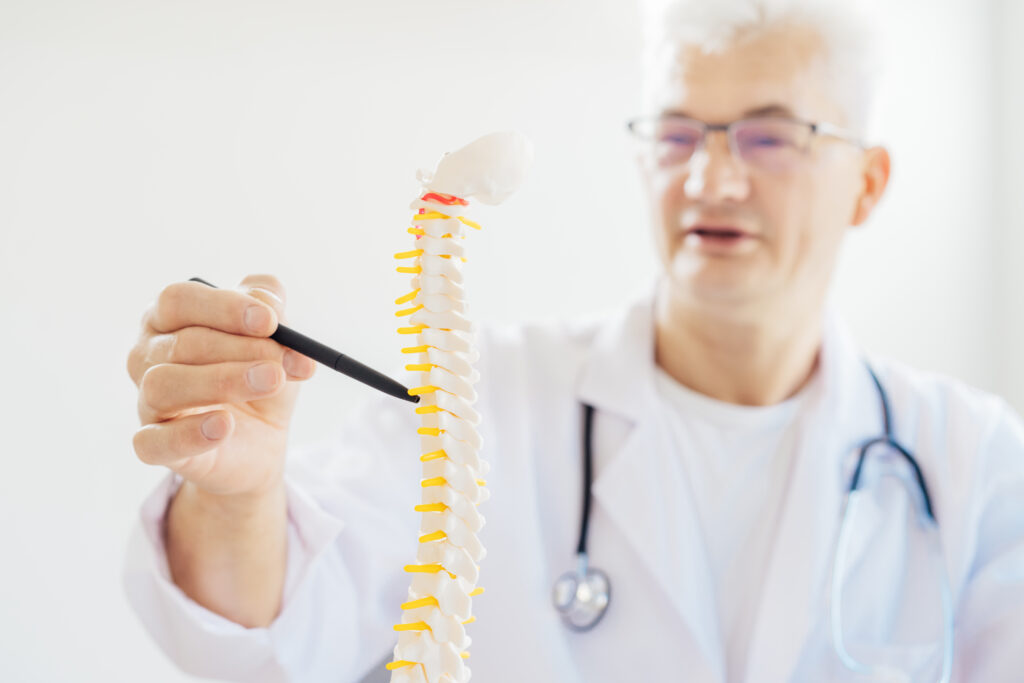Scoliosis is a condition characterized by an abnormal curvature of the spine, and understanding the different scoliosis curve types is crucial for effective diagnosis and treatment. In this article, we will delve into five distinct scoliosis curve types, shedding light on their unique characteristics and implications for those affected by this condition.
Right Thoracic Scoliosis
In the realm of scoliosis, the right thoracic curve is a common occurrence. When examining a person from the back, the right side presents a noticeable deviation from the ideal straight line. The apex of the curve, the part furthest from the gravity line, lies within the thoracic spine. Identifying the location of the apex is crucial in naming the specific type of scoliosis.
Treatment strategies for right thoracic scoliosis often involve addressing the curvature within the thoracic region, aiming to bring the spine closer to the ideal straight line.
Lumbar Scoliosis
Another distinct type of scoliosis is lumbar scoliosis. In this scenario, the apex of the curve resides in the lumbar spine, contributing to a deviation from the straight-line reference. Effective management of lumbar scoliosis necessitates a targeted approach focused on the lumbar region to achieve optimal results.
Understanding the unique features of lumbar scoliosis is pivotal for healthcare professionals in tailoring treatment plans that specifically address the challenges posed by this type of curvature.
S-Curve or Double Major Scoliosis
An intriguing and more complex scoliosis variant is the S-curve, often referred to as a double major scoliosis. This type is characterized by the presence of two curves, superimposed on each other. Managing an S-curve requires a delicate and nuanced approach, as efforts to correct one curve must not inadvertently exacerbate the other.
Healthcare providers must carefully navigate the treatment of S-curve scoliosis, ensuring that both curves are addressed simultaneously for a comprehensive and balanced correction.
Cervical Scoliosis
Moving higher up the spine, cervical scoliosis manifests when the apex of the curve is located in the neck area. This type requires specialized attention due to its unique location and potential impact on the cervical vertebrae. Treatment plans for cervical scoliosis aim to reduce the curvature in the neck region, aligning it more closely with the ideal spinal configuration.
Awareness of cervical scoliosis is vital for healthcare professionals and individuals alike, as early detection and intervention can significantly improve outcomes.
Thoracolumbar Scoliosis
In the realm of scoliosis variations, the thoracolumbar curve occupies a specific anatomical space. The apex of this curve falls between the 12th thoracic and the first lumbar vertebrae. This focused curvature demands a targeted approach in treatment, ensuring that the thoracolumbar region is appropriately addressed.
Healthcare practitioners must tailor interventions to the unique characteristics of thoracolumbar scoliosis to achieve optimal results in realigning the spine.
Reverse Curve Scoliosis
While the majority of scoliosis cases fall into the aforementioned categories, it’s crucial to acknowledge the existence of reverse curve scoliosis. This atypical variant mirrors a standard curve but in the opposite direction. Identifying a reverse curve is particularly significant, as it may signal an underlying neurological issue, deviating from the typical patterns observed in the majority of scoliosis cases.
Healthcare professionals should approach reverse curve scoliosis with heightened attention, investigating potential underlying causes and tailoring treatment plans accordingly.
Scoliosis Curve Types
Understanding the nuances of different scoliosis curve types is paramount for accurate diagnosis and effective treatment. Whether it’s the more common right thoracic or lumbar scoliosis, the complexity of an S-curve, the specificity of cervical or thoracolumbar scoliosis, or the uniqueness of a reverse curve, each type requires a tailored approach to achieve optimal outcomes. By delving into the intricacies of scoliosis variations, healthcare professionals can better guide individuals on their journey towards improved spinal health and overall well-being.
Also read: What are the Signs of Scoliosis?
About:
Dr. Strauss is the director of the Hudson Valley Scoliosis Correction Center in New York. He has been actively engaged in scoliosis treatment for the past 30 years and has authored two books on the subject, Your Child Has Scoliosis and The Truth About Adult Scoliosis.
He is Vice President of the CLEAR Scoliosis Institute and a lecturer for their introductory and advanced workshops. He is certified in scoliosis bracing and in the use of scoliosis specific exercises. Dr. Strauss is a graduate of the ISICO World Masters of Scoliosis.His postgraduate studies also include a Masters Degree in Acupuncture as well as training in Grostic, Pettibon, CBP, Clinical Nutrition, Chinese Herbal Medicine, Manipulation under Anesthesia, and Electrodiagnosis.
His scoliosis practice has treated patients from 25 states and 32 other foreign countries.If you have questions about childhood and adult scoliosis and how it can be successfully treated without surgery subscribe to our channel!
